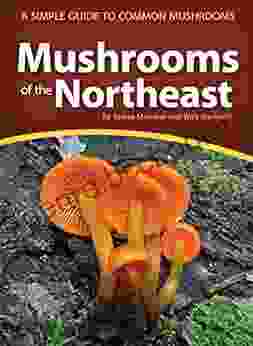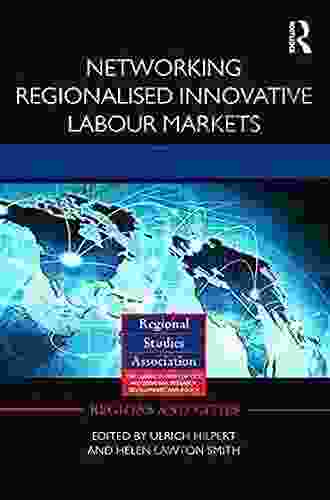Networking Regionalised Innovative Labour Markets: Regions and Cities 61

Regionalised innovative labour markets (RILMs) are geographical areas characterised by high levels of innovation and collaboration between firms, workers, and knowledge institutions. These markets are often found in regions with strong universities and research institutions, and they play a vital role in the development of new products and services.
RILMs are important for a number of reasons. First, they provide firms with access to a pool of skilled workers and knowledge resources. This can help firms to innovate and grow more quickly. Second, RILMs can help to create a more vibrant and dynamic economy. This can attract new businesses and investment to the region. Third, RILMs can help to improve the quality of life for residents. This is because they provide access to good jobs and educational opportunities.
Networks play a vital role in the development and functioning of RILMs. These networks connect firms, workers, and knowledge institutions, and they facilitate the flow of information, ideas, and resources.
4.2 out of 5
| Language | : | English |
| File size | : | 4062 KB |
| Text-to-Speech | : | Enabled |
| Screen Reader | : | Supported |
| Enhanced typesetting | : | Enabled |
| Word Wise | : | Enabled |
| Print length | : | 354 pages |
There are a number of different types of networks that can be found in RILMs. These include:
- Formal networks: These networks are typically created by governments or other organisations. They can include business incubators, science parks, and technology transfer offices.
- Informal networks: These networks are formed spontaneously between firms, workers, and knowledge institutions. They can include social networks, professional associations, and industry clusters.
Both formal and informal networks can play an important role in the development of RILMs. Formal networks can provide firms with access to resources and support, while informal networks can facilitate the flow of information and ideas.
RILMs face a number of challenges. These include:
- Competition from global markets: RILMs must compete with other regions for investment and talent. This can be difficult for regions that do not have strong universities or research institutions.
- The need for collaboration: RILMs require a high level of collaboration between firms, workers, and knowledge institutions. This can be difficult to achieve in practice.
- The impact of technological change: Technological change can disrupt RILMs. This is because it can lead to the decline of traditional industries and the emergence of new ones.
Despite these challenges, RILMs also present a number of opportunities. These include:
- The potential for innovation: RILMs provide a fertile environment for innovation. This is because they bring together firms, workers, and knowledge institutions that have complementary skills and resources.
- The potential for economic growth: RILMs can help to create a more vibrant and dynamic economy. This can attract new businesses and investment to the region.
- The potential for social progress: RILMs can help to improve the quality of life for residents. This is because they provide access to good jobs and educational opportunities.
RILMs are a key driver of economic growth and social progress. They provide firms with access to a pool of skilled workers and knowledge resources, and they help to create a more vibrant and dynamic economy. However, RILMs also face a number of challenges, including competition from global markets, the need for collaboration, and the impact of technological change.
Despite these challenges, RILMs present a number of opportunities for regions. These opportunities include the potential for innovation, economic growth, and social progress.
This book provides a comprehensive analysis of the factors that shape the emergence and development of RILMs. It also examines the challenges and opportunities that these markets face in the context of globalisation and technological change. The book is essential reading for anyone interested in the future of work and innovation.
4.2 out of 5
| Language | : | English |
| File size | : | 4062 KB |
| Text-to-Speech | : | Enabled |
| Screen Reader | : | Supported |
| Enhanced typesetting | : | Enabled |
| Word Wise | : | Enabled |
| Print length | : | 354 pages |
Do you want to contribute by writing guest posts on this blog?
Please contact us and send us a resume of previous articles that you have written.
 Book
Book Novel
Novel Page
Page Chapter
Chapter Text
Text Story
Story Genre
Genre Reader
Reader Library
Library Paperback
Paperback E-book
E-book Magazine
Magazine Newspaper
Newspaper Paragraph
Paragraph Sentence
Sentence Bookmark
Bookmark Shelf
Shelf Glossary
Glossary Bibliography
Bibliography Foreword
Foreword Preface
Preface Synopsis
Synopsis Annotation
Annotation Footnote
Footnote Manuscript
Manuscript Scroll
Scroll Codex
Codex Tome
Tome Bestseller
Bestseller Classics
Classics Library card
Library card Narrative
Narrative Biography
Biography Autobiography
Autobiography Memoir
Memoir Reference
Reference Encyclopedia
Encyclopedia Kylie Lee Baker
Kylie Lee Baker Robbie Robertson
Robbie Robertson Langston Jakes
Langston Jakes Lars Mytting
Lars Mytting Mary Thibodeau
Mary Thibodeau Kyle Mitchell
Kyle Mitchell Palle Yourgrau
Palle Yourgrau Shreeharsh Ambli
Shreeharsh Ambli Lewis F Day
Lewis F Day Mike Bockoven
Mike Bockoven Rich Parsons
Rich Parsons Robert Greskovic
Robert Greskovic Lily Ebert
Lily Ebert Nikki Glandon
Nikki Glandon Russell Streeter
Russell Streeter Lisa Mcclatchy
Lisa Mcclatchy Lamar Underwood
Lamar Underwood Matthew Pearl
Matthew Pearl Lindsay Eagar
Lindsay Eagar Lauren A Rivera
Lauren A Rivera
Light bulbAdvertise smarter! Our strategic ad space ensures maximum exposure. Reserve your spot today!

 Felix CarterMushrooms of the Northeast: An Essential Guide to Identifying, Harvesting,...
Felix CarterMushrooms of the Northeast: An Essential Guide to Identifying, Harvesting,...
 Fernando PessoaHow to Get What You Want from a Narcissist: Uncover Their Hidden Agenda and...
Fernando PessoaHow to Get What You Want from a Narcissist: Uncover Their Hidden Agenda and... Elliott CarterFollow ·5.6k
Elliott CarterFollow ·5.6k Dwayne MitchellFollow ·19.5k
Dwayne MitchellFollow ·19.5k Brayden ReedFollow ·8.9k
Brayden ReedFollow ·8.9k Jimmy ButlerFollow ·3.1k
Jimmy ButlerFollow ·3.1k Eddie PowellFollow ·17.3k
Eddie PowellFollow ·17.3k Robert Louis StevensonFollow ·10.6k
Robert Louis StevensonFollow ·10.6k Fredrick CoxFollow ·3.8k
Fredrick CoxFollow ·3.8k Harold BlairFollow ·15.4k
Harold BlairFollow ·15.4k

 Branden Simmons
Branden SimmonsUnveiling the World of Tequila: A Collector's Guide to...
: Prepare to embark on a tantalizing journey...

 Chuck Mitchell
Chuck MitchellHazel McCallion and the Development of Mississauga: A...
: The Matriarch of Mississauga Hazel...

 Lucas Reed
Lucas ReedUnveiling the Hidden Treasures of Tequila, Mezcal, and...
Prepare to be captivated...

 Isaias Blair
Isaias BlairBusinesses With Stories: The Power of Storytelling in...
In today's competitive business environment,...

 Ethan Gray
Ethan GrayUnveiling the World of Tequila, Mezcal, and Sotol: The...
Embark on a...

 Barry Bryant
Barry BryantClare Boothe Luce: Renaissance Woman
In the annals of history, few...
4.2 out of 5
| Language | : | English |
| File size | : | 4062 KB |
| Text-to-Speech | : | Enabled |
| Screen Reader | : | Supported |
| Enhanced typesetting | : | Enabled |
| Word Wise | : | Enabled |
| Print length | : | 354 pages |








